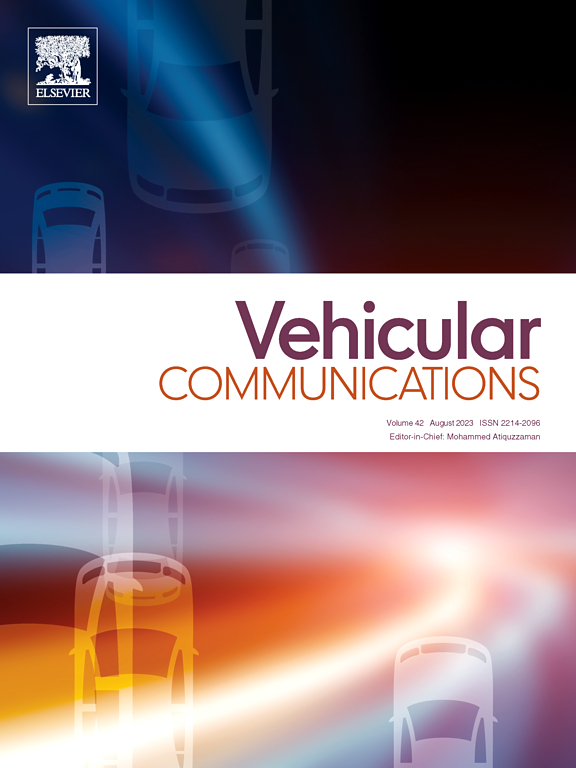无人机支持的通信:当前和未来的解决方案
IF 6.5
2区 计算机科学
Q1 TELECOMMUNICATIONS
引用次数: 0
摘要
无线通信的进步显著地导致了前所未有的新应用和服务。再加上下一代网络(NGN)和蜂窝通信和网络的最新进展,主要是第五代(5G)网络,导致了新技术解决方案的兴起。无人机(uav)就是这样一种解决方案,它已经从传统的军事和民用应用发展到新的创新解决方案,为无线通信和网络提供支持。随着其处理和通信能力的进步,无人机现在支持核心和边缘网络,以可靠和快速的方式向最终用户提供服务。无人机与人工智能(AI)和区块链等不断发展和进步的技术之间的协同和集体协作正在重塑无线通信和网络的格局,使超越传统限制的更强大、更安全、适应性更强的系统成为可能。在本文中,我们探讨了利用无人机通信和网络的各种协作解决方案,这些解决方案不仅可以加强移动节点与核心网络之间的通信,还可以加强边缘计算基础设施。这种增强支持可扩展的数据存储和智能处理,以提升最终用户服务和应用程序。此外,我们还讨论了无人机支持的ngn的障碍、问题和未来途径。本文章由计算机程序翻译,如有差异,请以英文原文为准。
UAV-supported communication: Current and prospective solutions
The advancement in wireless communication has significantly resulted in unprecedented new applications and services. This, coupled with Next-Generation Networking (NGN) and the recent advances in cellular communication and networking, predominantly the Fifth-Generation (5G) network, has resulted in the rise of new technological solutions. Unmanned Aerial Vehicles (UAVs) is one such solution that has evolved from its traditional usage in military and civilian applications, towards new and innovative solutions that provide support to wireless communication and networking. With advances in their processing and communication capabilities, UAVs are now supporting both core and edge networks to deliver services to end-users in a reliable and fast manner. The synergy and collective collaboration between UAVs and continuously evolving and progressing technologies such as Artificial Intelligence (AI) and blockchain are reshaping the landscape of wireless communication and networking, enabling more robust, secure and adaptable systems that transcend traditional limitations. In this article, we explore various collaborative solutions that leverage UAV communication and networks that not only bolster communication between mobile nodes and the core network but also reinforce the edge computing infrastructure. This reinforcement enables scalable data storage and intelligent processing to elevate end-user services and applications. Additionally, we address the obstacles, concerns, and future pathways concerning UAV-supported NGNs.
求助全文
通过发布文献求助,成功后即可免费获取论文全文。
去求助
来源期刊

Vehicular Communications
Engineering-Electrical and Electronic Engineering
CiteScore
12.70
自引率
10.40%
发文量
88
审稿时长
62 days
期刊介绍:
Vehicular communications is a growing area of communications between vehicles and including roadside communication infrastructure. Advances in wireless communications are making possible sharing of information through real time communications between vehicles and infrastructure. This has led to applications to increase safety of vehicles and communication between passengers and the Internet. Standardization efforts on vehicular communication are also underway to make vehicular transportation safer, greener and easier.
The aim of the journal is to publish high quality peer–reviewed papers in the area of vehicular communications. The scope encompasses all types of communications involving vehicles, including vehicle–to–vehicle and vehicle–to–infrastructure. The scope includes (but not limited to) the following topics related to vehicular communications:
Vehicle to vehicle and vehicle to infrastructure communications
Channel modelling, modulating and coding
Congestion Control and scalability issues
Protocol design, testing and verification
Routing in vehicular networks
Security issues and countermeasures
Deployment and field testing
Reducing energy consumption and enhancing safety of vehicles
Wireless in–car networks
Data collection and dissemination methods
Mobility and handover issues
Safety and driver assistance applications
UAV
Underwater communications
Autonomous cooperative driving
Social networks
Internet of vehicles
Standardization of protocols.
 求助内容:
求助内容: 应助结果提醒方式:
应助结果提醒方式:


